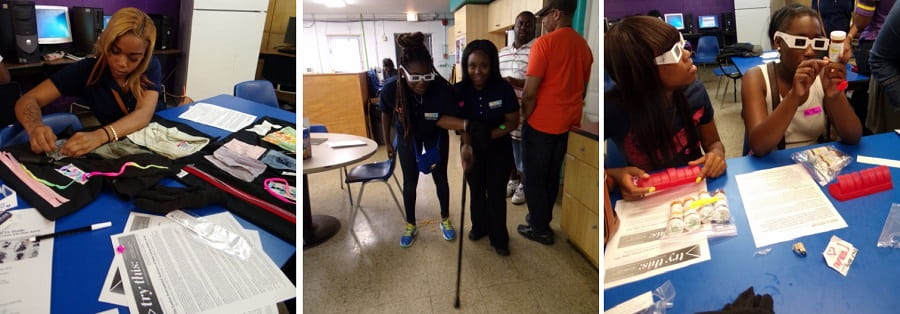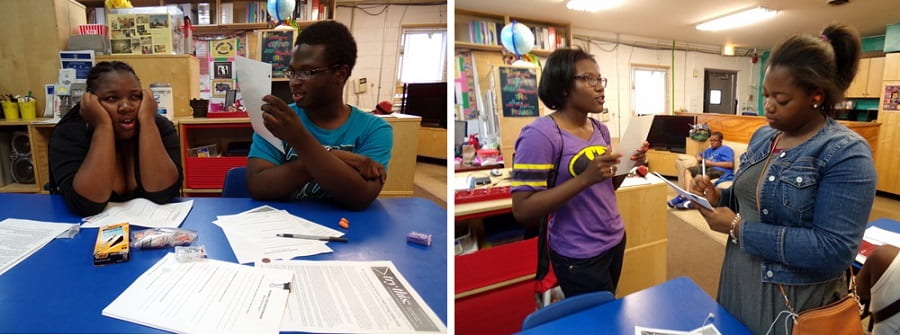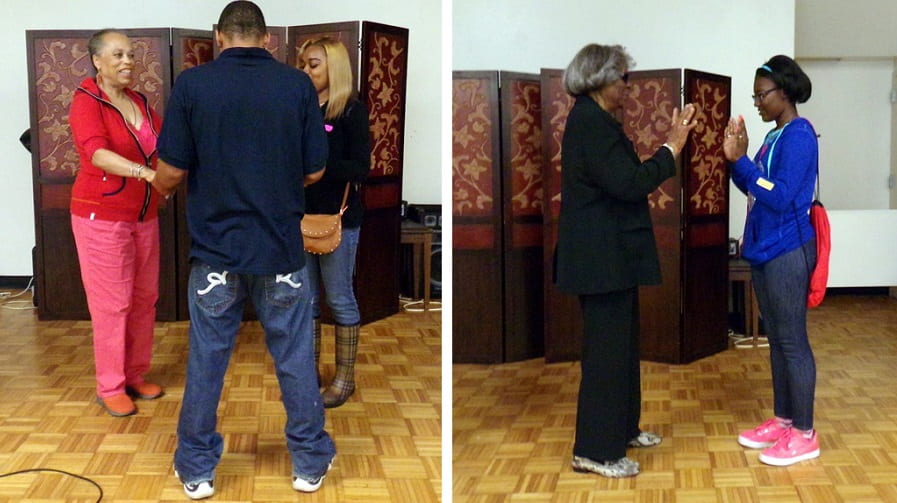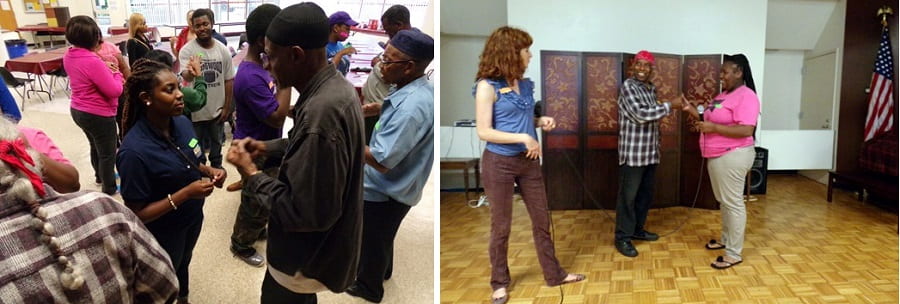After months of planning and anticipation, Generations of Us officially began on Monday, August 11! Walking into the South Side Help Center, located at 104th and Halsted in the Roseland community, I could feel the energy of young adults. I approached planning the curriculum by focusing on the 6-step process of conducting an oral history interview: plan, prepare, exchange, preserve, present, and reflect. This process is the foundation upon which each day’s agenda is built. This week, we will be focusing on planning and preparing, with the exchange, preserving, presenting, and reflecting stages happening next week. The thought is that by devoting time, energy, and resources to planning and preparing, we all will have built the relationships and built the skills to record an interview. In this post, I will reflect on the first two days of the project: Monday and Tuesday. In total, Generations of Us will take place over the course of two weeks!
Monday’s agenda:
1. Introduction and Icebreaker
2. Set group expectations
3. Introduction to Oral History
4. Communication Brainstorm
5. Aging Simulation
6. Closing: prepare for travel to the Atlas Senior Center
On Monday, I spent the afternoon at the South Side Help Center to focus on meeting and engaging with the young adult participants, or our Interviewers. I learned names and, as a fan of icebreaker questions, also what superpowers each young adult would have if they could choose any one. Their chosen superpowers ranged from telekinesis to omnipotence to flying to a combination of them all. I was immediately impressed and amused by the energy of the youth as well as by our immediate focus on assets, strengths, and supporting each other through sharing.
I also learned that two of the youth already had experiences with Oral History, mostly through high school classes. In addition, most students are from the Roseland community and almost all currently live on the South Side of Chicago. After getting to know each other a little bit, I led a brief lesson to introduce oral history.
Each Interviewer-in-training received the guide that I created, and we asked and answered the fundamental questions of “what is oral history?” and “you mean oral history is not just reminiscing about the past?” We emphasized that oral history is a structured and formal interview process to record and preserve personal stories and experiences that historians may use in the future. We reviewed the goal of this oral history project to promote intergenerational peace and dialogue by training young adults to record the histories of older adults in their community. Then, each young adult wrote personal goals that they would like to work on during the course of the project.
To wrap up our discussion of oral history, I posed a question to the group. I asked, “If you had a personal story to share with someone, what would you need from that person to feel brave?”
Even though we want to create a safe space for our narrators to tell their story, I choose to ask students how we could create a brave space. For me, the brave space is safe, empowering, and supportive. The youth chose to respond to my questions with incredible insight and intelligence. Here are some responses:
“Be prepared to conduct the interview and to hear what the person has to say.” “Be a good listener.” “Be respectful.” “Be calm and comfortable.” “Have good body language.” “Be able to make the person trust you.” “Get to know the person.” And “show that you are interested!”
To wrap up the first day, we learned about some of the challenges facing older adults as they age. To do that, we discussed the natural aging process and participated in an aging simulation. The young adults visited five stations to learn about neuropathy, hearing loss, vision loss, language impairments, and impairments in mobility and balance. The room was lively and active, and here are some pictures to demonstrate the concentration and engagement of students in the simulation.


For our final closing and to preview our agenda on the second day, we discussed the aging simulation. We thought about how the aging process may affect older adults and more specifically, the oral history interview process. Many great ideas swirled, and I felt that we all left the room that day with a sense of anticipation to travel to the Atlas Senior Center and meet the older adults the following afternoon.
Tuesday’s agenda:
Welcome young and older adult participants/Brief Introduction of Project
Icebreaker/Energizer: handshakes from around the world
Purpose and Tour of the Atlas Senior Center
Re-introduction of the Project and expectations
Past and Present Brainstorming Activity
Question Game
At 2pm, our group finally came together, bringing the young adult interviewers via school bus from the South Side Help Center to join the older adult narrators at the Atlas Senior Center. Remaining in the phases of planning and preparing, we focused on getting to know each other, building trust, setting expectations, and creating dialogue between the generations present in the room. With a room filled with 25 young and older adults, we began by meeting different people and doing the “handshakes from around the world” energizing icebreaker.


After sharing a little bit about ourselves with one another, our older adult participants gave the group a tour of the Atlas Senior Center and discussed with us the role of the Senior Center in the lives of its members and the community. Insightful young adults noted that the Senior Center fills a role for older adults in similar ways that the South Side Help Center feeds their spirits, minds, and bodies. One older adult participant noted, “the Atlas Center keeps me alive. I retired a year ago, and you cannot just sit at home. So, I come here.” This parallel between the work of both “Centers” was one that I had not drawn but is so obvious and important.

Upon returning to our large room at the Atlas Center, we discussed the goals, objectives, and anticipated outcomes of the Generations of Us project. Everyone is already putting our presentation date of August 21 on his or her calendar!
Creating additional opportunities for intergenerational dialogue, we divided into small groups of 2-5 participants to do a Past and Present Brainstorming activity. Groups were asked to brainstorm things from the past (older than 20 years) and the present (younger than 20 years) based on certain categories. Some of those categories were: popular movies, popular music, famous athletes, presidents, etc.

Lots of debate and laughter arose out of these brainstorming sessions. One young adult remarked, “why is everything a remake?,” while another responded “I can’t believe you MADE your own toys.” An older adult responded to a young adult’s choice for the popular music category by explaining, “the Jackson 5 are not new. They have been around for over 50 years. My daughter is 52, and I listened to them when I was pregnant!”
We wrapped up our second day by returning to the topic of Interviewing skills with the “Question Game.” Sitting in a big circle, the group was challenged to ask me questions. If the question was the “right type of question,” the group would get a point. If it was the “wrong type of question,” I would receive a point. The object of this game is to illustrate the types of questions that are open-ended and elicit a story. The group beat me and another young adult participant very quickly by catching onto the idea of open-ended questions in the first few minutes. The questions posed by participants impressed me, and I am excited to proceed to the next stages of preparing and exchanging in the oral history interview process!